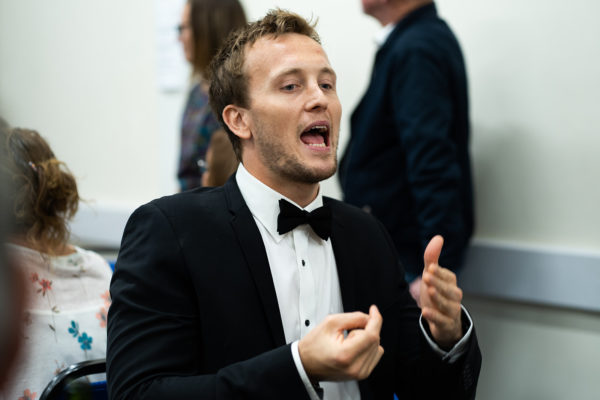All Eyes on the Lips!
or
It’s all about the Lips!
When you think of lipreading and lipspeaking you notice that they are intertwined. Both words contain ‘lip’, a part of our mouth, and the actual main body part that I and most other deaf people focus on with our eyes for communication support (hearing people focusing on each other’s lips may have other thoughts!) I say ‘most’ and not ‘all’ as other Deaf people whose first language is British Sign Language (BSL) do not just rely on the ‘lips’ but also the ‘hands’ for signing and the ‘face’ to convey expressions and meaning.
A lipreader like myself is someone who is able to understand speech by visually interpreting the movements of the lips. But how did I become one? I was born hearing, acquired speech and language but then from the age of five my hearing deteriorated year by year until becoming profoundly deaf in my late teens. Perhaps, as each year of my hearing drop went by, I was subconsciously lipreading to make out the words at the same time as straining to hear with what residual hearing I had. So later lipreading became more natural to me & it helped greatly after adjusting to profound deafness.
I guess anyone could become a lipreader either with training or without. My hearing sister is a very good lipreader as I recall countless times when we were communicating on the London tube & other noisy places using no voice, and having other people looking our way then checking their own hearing to see if it was working!! Because we weren’t using sign language which is more visible, lipreading can cause untold confusion!
Is it easy to lipread?
It all depends on a number of factors such as if the other person speaks slowly and clearly without exaggerating, and doesn’t block their mouth! See these other tips of what you should and shouldn’t do when communicating with a deaf person who lipreads. This would help avoid a lot of Manuel’sQue?! Que?! in Fawlty Towers! A colleague I used to work with had a walrus moustache and was impossible to lipread! I joked that I would come with my shears and he would lift his moustache up and tell me not to touch! I think he did afterall trim his moustache to make it easier.
As a deaf person trying to walk and lipread at the same time by looking at the other person’s face it can be reminiscent of Mr Bean. A couple times I have actually ended up walking straight into a lamppost which was painful! You would have thought the other person could give us fair warning!
Is there any support?
Lipreaders often make do without communication support in the workplace & can struggle not being aware that they can get support. It’s a misconception that BSL interpreters and palantypists are the only form of communication support. Lipreaders don’t need to know BSL as they can use a lipspeaker trained in the art of lipreading!
A lipspeaker is a hearing person who has been professionally trained to be easy to lipread. As I ended up learning BSL I regularly use lipspeakers with additional sign at work as find this form of communication support best for me. But others can just use pure lipspeakers with no additional sign. You can watch a demonstration of both pure lipspeaking and lipspeaking with sign on the ALAS website. For any lipreaders out there who are struggling & would like to try using a lipspeaker contact Lipspeaker UK.
During this lipreading awareness week I hope there is increased understanding that deaf or hard of hearing people who lipread can get the support they need.
Hala Hashem Bouguerne
@Halahb7
September 2018






